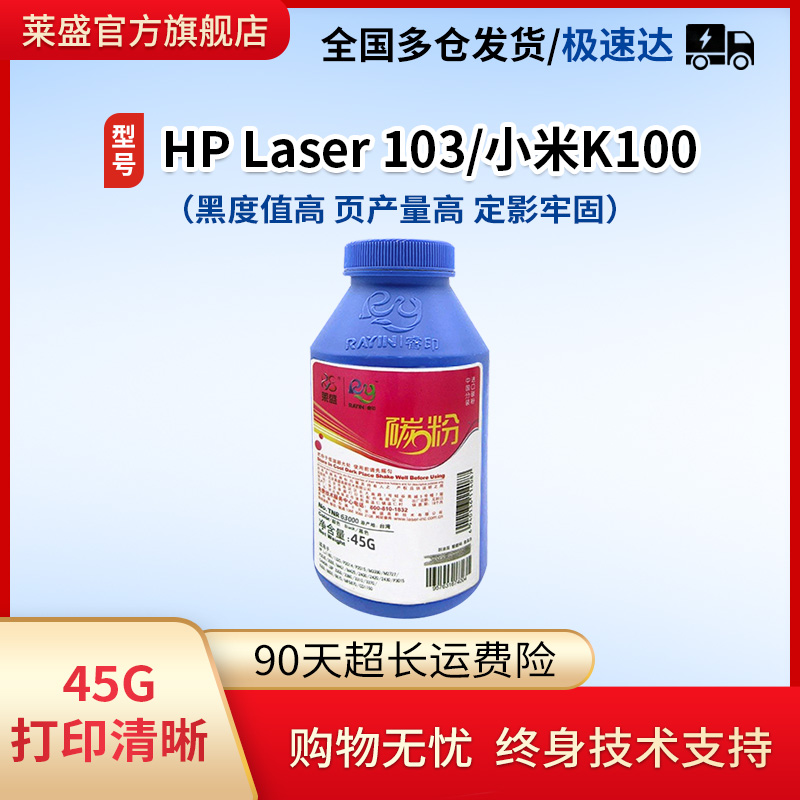揭秘墨粉:从原料到成品的全过程
尕枯非生
2024-10-29 04:26:57
0次
揭秘墨粉:从原料到成品的全过程
一、引言
墨粉,作为现代办公设备——打印机、复印机的重要耗材,已经深入到我们的日常生活和工作中。但你知道吗?墨粉的生产过程并不简单,它需要经过多个环节的精细加工和严格的品质控制。接下来,让我们一起揭秘墨粉从原料到成品的全过程。 二、原料准备 墨粉的原料主要包括碳黑、树脂、电荷添加剂等。其中,碳黑是主要的着色剂,树脂则起到粘合和塑形的作用,电荷添加剂则负责控制墨粉的带电性能。这些原料在进入生产环节前,都需要经过严格的筛选和检测,确保其质量和纯度。 三、生产过程 1. 混合:将筛选合格的原料按照一定比例混合在一起,为后续的加工做准备。 2. 研磨:通过专业的研磨设备将混合原料研磨成细腻的粉末状。 3. 表面处理:为了改善墨粉的流动性和带电性能,需要对研磨后的墨粉进行表面处理。 4. 分类与收集:经过表面处理的墨粉会被送到分类和收集环节,根据其粒度和带电性能进行分类和收集。 四、成品检测 在墨粉生产过程中,每一个环节都需要进行严格的质量控制。当墨粉成品生产出来后,还需要进行一系列的检测,包括外观检测、粒度检测、电性能检测等。只有通过这些严格检测的墨粉,才能被认定为合格产品。 五、包装与运输 合格的墨粉会被送到包装车间,进行包装。包装材料需要具备防潮、防静电等功能,以保证墨粉在运输和存储过程中的质量。包装好的墨粉会经过严格的检验,然后进行发货,送到全国各地乃至全球的客户手中。 六、总结 通过以上几个环节,我们不难看出墨粉的生产过程既复杂又严谨。每一个环节都需要专业的人员和设备进行操作和控制,以确保最终产品的质量和性能。正是这种严谨的生产过程,保证了我们在使用打印机、复印机等办公设备时,能够获得高质量的打印效果。 七、翻译成英文 Revealing the Secrets of Toner: The Entire Process from Raw Materials to Finished Product Introduction: Toner, an important consumable for modern office equipment such as printers and copiers, has deeply penetrated into our daily lives and work. However, do you know that the production process of toner is not simple, requiring multiple stages of precise processing and rigorous quality control? Next, let's uncover the entire process of toner production from raw materials to finished products. Raw Material Preparation: The raw materials of toner mainly include carbon black, resin, charge additives, etc. Carbon black is the main colorant, the resin serves as a binder and shaper, while the charge additive is responsible for controlling the electrical properties of the toner. These raw materials need to be subjected to strict screening and testing before entering the production process to ensure their quality and purity. Production Process:1. Mixing: Mix the screened raw materials in a certain proportion to prepare for subsequent processing.
2. Grinding: Use professional grinding equipment to grind the mixed raw materials into fine powder. 3. Surface Treatment: Improve the flowability and electrical properties of the toner by treating its surface. 4. Classification and Collection: The treated toner is sent to the classification and collection stage, where it is sorted and collected based on its particle size and electrical properties. Finished Product Testing: Strict quality control is required in every stage of the production process of toner. Once the finished product is produced, it needs to pass a series of tests, including appearance tests, particle size tests, electrical property tests, etc. Only those toners that pass these rigorous tests can be considered qualified products. Packaging and Transportation: Qualified toners are sent to the packaging workshop for packaging. Packaging materials need to have functions such as moisture resistance and static electricity prevention to ensure the quality of the toners during transportation and storage. The packaged toners will be inspected rigorously before being shipped and delivered to customers all over the country and even around the world. Conclusion:Through the above steps, we can see that the production process of toner is both complex and rigorous. Each stage requires professional personnel and equipment for operation and control to ensure the quality and performance of the final product. It is this rigorous production process that ensures high-quality printing results when we use office equipment such as printers and copiers.
相关内容
热门资讯
墨粉耗尽?如何选择和更换的技巧
本文介绍了墨粉耗尽的判断、选择和更换技巧。首先通过观察打印质量或打印机提示判断墨粉耗尽。其次,选择墨...
墨粉质量对打印效果的影响
墨粉质量影响打印效果,包括清晰度、色彩饱和度、耐久性、干燥速度等。优质墨粉提供清晰、鲜艳的打印效果,...
墨粉耗尽?这些省钱又环保的替换...
当打印机墨粉耗尽时,无需立即购买,可尝试再利用剩余墨粉、找替代品、使用补充墨粉套装、考虑兼容型墨盒等...
墨粉耗尽?教你如何快速更换并保...
本文介绍了如何快速更换墨粉并保持高效打印的步骤和注意事项,包括定期检查墨粉量、保持打印机清洁、选择合...
墨粉与打印机匹配指南
为了保障打印质量与打印机正常运行,选匹配墨粉至关重要。需了解打印机型号、墨粉类型及品牌兼容性,考虑打...
墨粉消耗快?教你如何有效节约成...
摘要:为降低墨粉成本,可优化打印设置、定期维护打印机、使用正确耗材、控制打印需求、合理储存和使用耗材...
墨粉耗尽?快速了解更换步骤
当打印机墨粉耗尽时,需先关闭并断开电源,再打开盖子取出旧墨粉盒。准备好新墨粉盒并按照指示正确安装,关...
打印机墨粉消耗快?原因及解决办...
打印机墨粉消耗快,主要原因是打印频率、打印机质量、墨粉质量和打印设置。为减缓消耗,可调整打印频率、维...
墨粉的选购与使用误区,你中招了...
本文介绍了选购和使用墨粉的常见误区及注意事项,如贪图便宜、不匹配打印机型号、不遵循操作规范、频繁更换...
墨粉的常见问题及解决方案,让打...
本文介绍了激光打印机墨粉常见问题及解决方案,包括打印质量、速度、墨粉消耗、异味冒烟和不兼容问题。建议...



